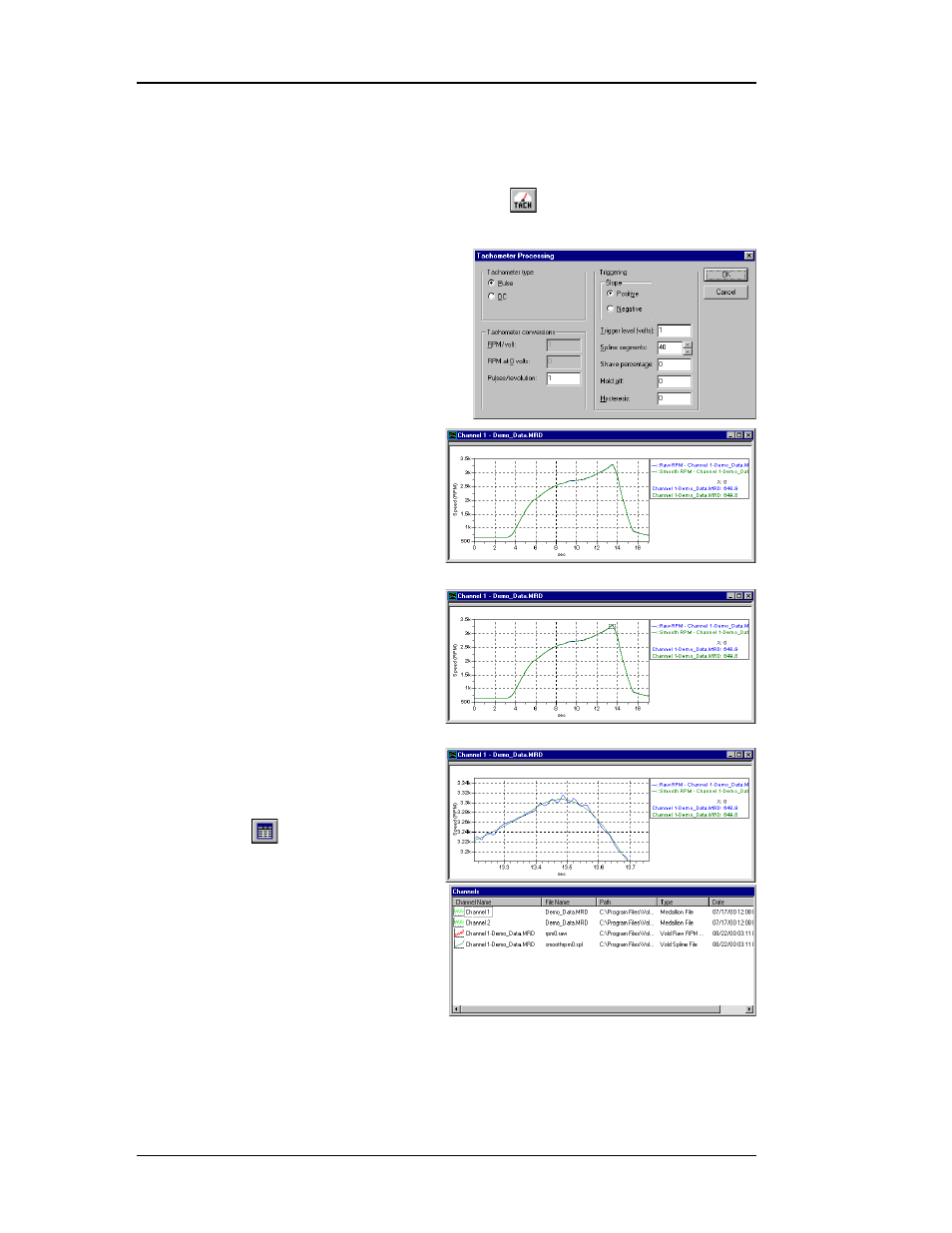Process a tachometer signal – Measurement Computing Medallion Rotate rev.2.3 User Manual
Page 18

18
Medallion Rotate Manual
October 2000
P
ROCESS
A
T
ACHOMETER
S
IGNAL
Channel 1 should still be selected in the Channel List window. Channel 1 is
a tachometer signal; you can process it to get the instantaneous RPM. You do
not have to display the Channel List window again.
5. Click the Tachometer Processing button
. You can also choose the
Tachometer Processing command from the Analysis menu.
6. Make sure the Trigger Level is
between 1 and 4 Volts. In general,
the trigger level should be in the
middle of the amplitude of the
tachometer signal for a pulse
tachometer. Choose OK to process
the tachometer signal.
Medallion Rotate displays a plot
of the machine RPM. There are actually
two curves on the plot. One is the
smoothed (spline-fit) RPM curve. The
other is the Raw RPM curve before
Medallion Rotate applied the spline-fit
to smooth the RPM curve.
7. Zoom in on the peak of the
RPM curve to see the two
curves. Right-click the plot,
choose Zoom, then click and
drag over the region you want
to zoom.
The smooth curve is the spline-fit
RPM curve, while the jagged curve is
the raw RPM curve before smoothing.
8. Click the Channel List
button
or press Ctrl+L to
display the Channel List
window. Note that there are two
new generated files in the
Channel List, each with one
channel. Medallion Rotate
created and saved these files in
the Results directory (see
“Manage Files” to set the
Results directory).
• The smoothrpm0.spl file is the smooth (spline-fit) RPM data.
• The rpm0.raw file is the Raw RPM data.